As I was in Newcastle, I decided to take a visit of Newcastle Castle (also known as Castle Garth). The site of the castle contains a small patch of the grounds, the castle keep, and the barbican. The barbican (now known as the Black Gate), was my first stop. The barbican was surrounded by a small moat; the upper floors were added in the 1600s. Today, these rooms are a museum.
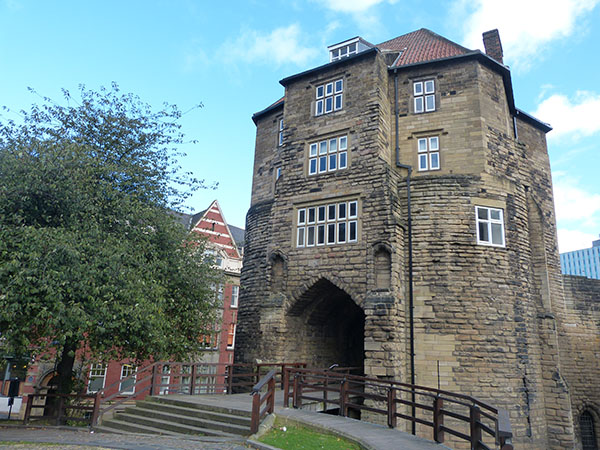
Black Gate
From the upper floors of the barbican, the inner courtyard can be seen as well as a pit in the ground known as the Heron Pit, named after a corrupt sherrif of Northumberland who had the pit (used as a prison) installed above his quarters.
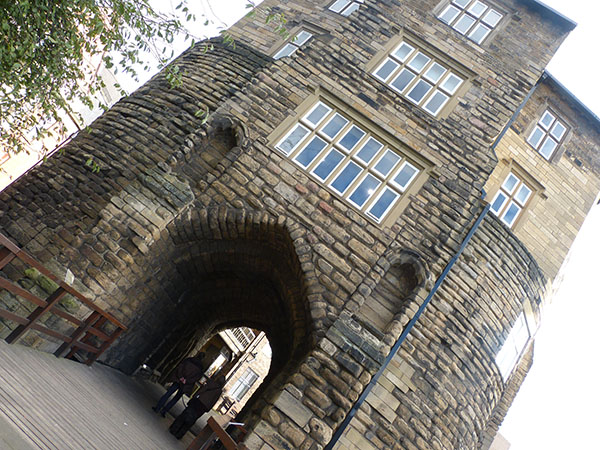
Black Gate
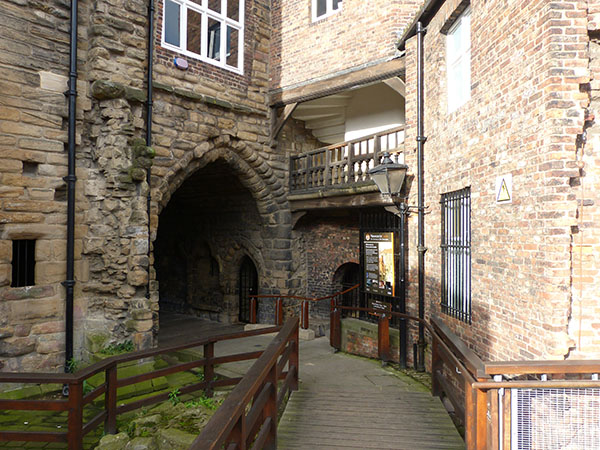
Black Gate inner yard
A castle occupied its current location on top of a hill before the 1080s when the Norman castle was constructed. By the middle ages in the late 1200s, the king visited; Edward I had Christmas at the castle.
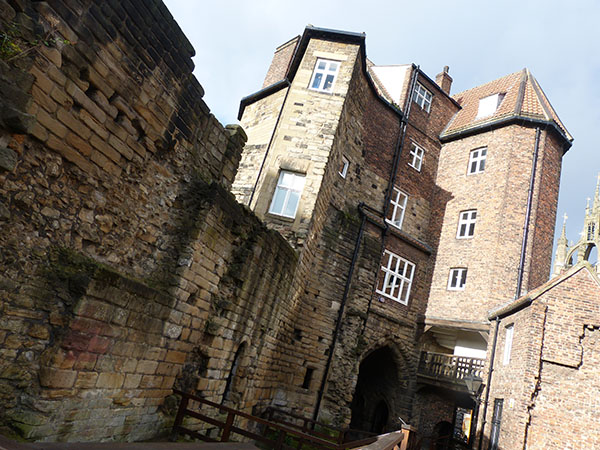
Black Gate inner yard
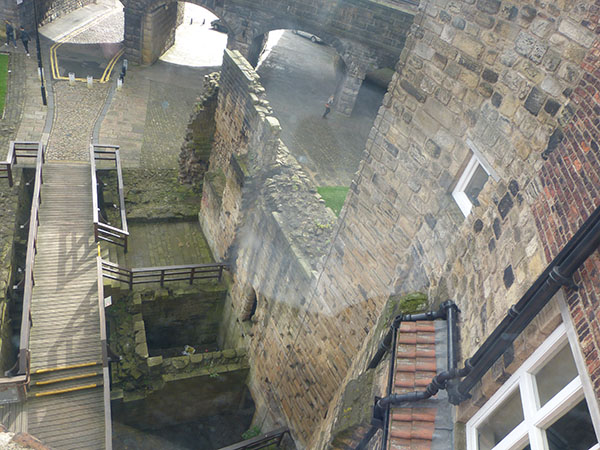
Heron Pit
Part of the grounds between the castle keep and barbican and below the bridge was the location of a church with at least 600 human remains buried beneath. The church was in existance before the castle, and the walls of the castle were built around it. It was known as Monkchester, suggesting it was built near a Roman fort known as Pon Aelius. The cobble stones near here mark where the Roman fort was located.
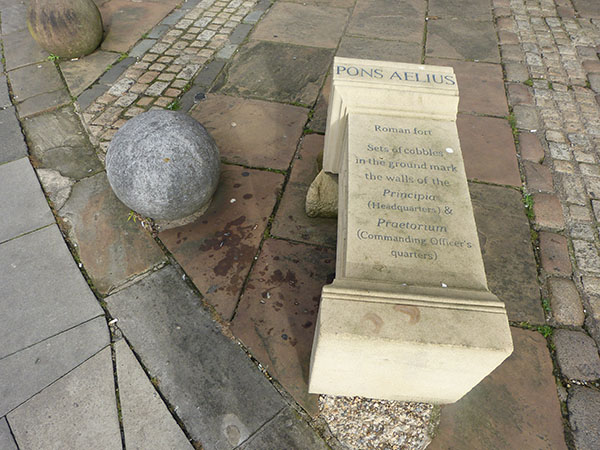
Pons Aelius
After looking at the grounds, I went into the castle keep, which is well-preserved and contains many rooms to look around. Some of the rooms contained items similar to what would have been in the rooms, and the garderobes had the wooden toilet holes over them. The Great Hall looked impressive with its high ceiling and balconies over the side (which would have been opened later). Also near the top of the keep was a well room, and the well was noted at being 99 feet deep with the stone basins on either side of the well containing lead pipes that could pipe water through other areas of the keep.
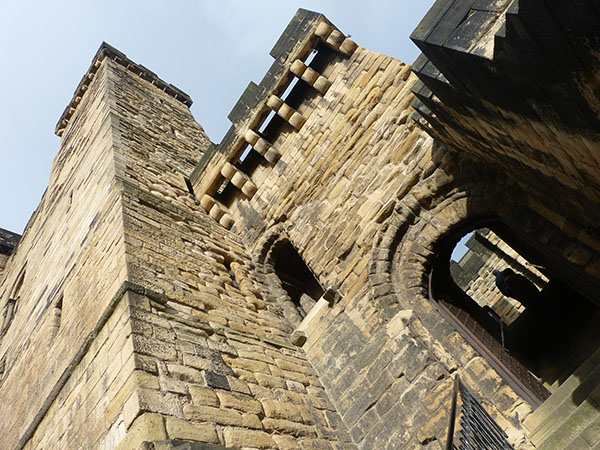
Castle keep
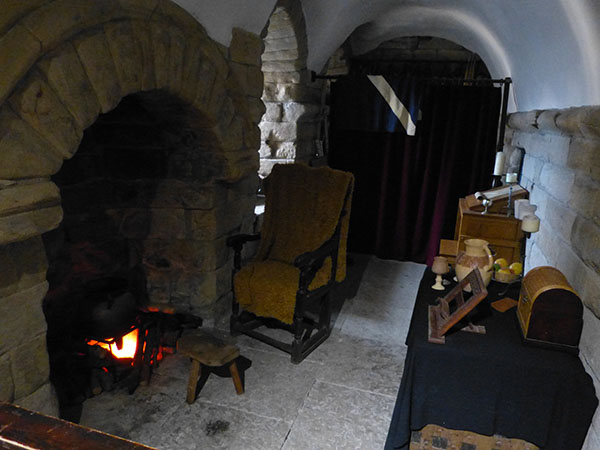
Officer's room

Well room and well
One of the other rooms in the keep had grafitti dating from the Civil War (1600s). Troops were stationed here.
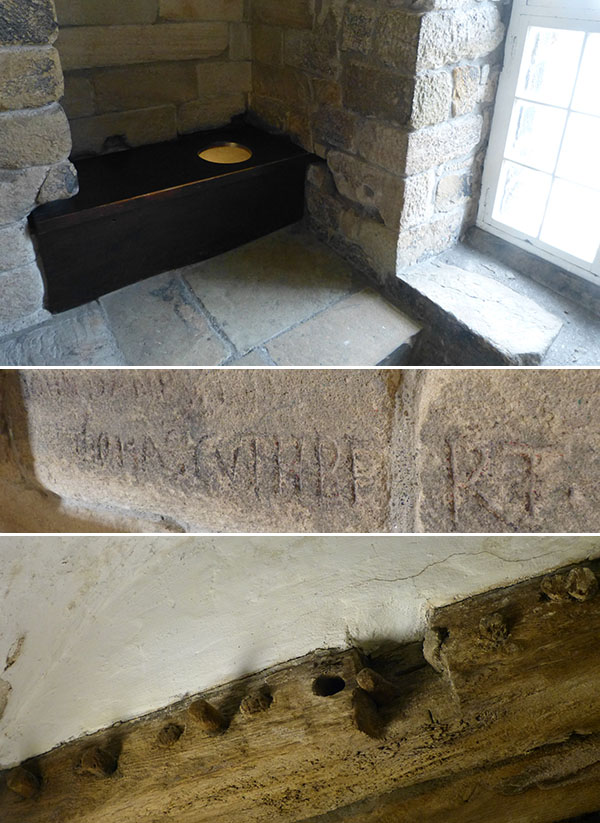
Garderobe, grafitti from Civil War, original wooden beams
After visiting the Great Hall and other rooms, I walked up the winding staircase to the top of the keep where I admired the excellent views. Panels on the top discussed the railways and bridge. The tracks are very close to the castle and would have gone through the castle; I am glad that they prevented this and saved the beautiful castle.
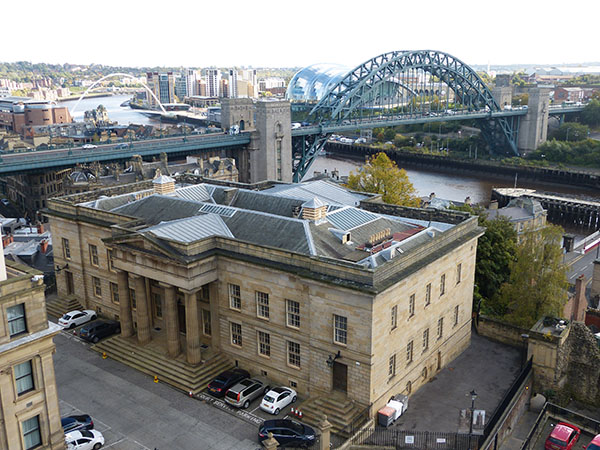
Views from top
Next, I headed all the way down the winding staircase to the lower floors. Down here was a cellar that was used for storage and then later as a prison at one time, and the iron chains can still be seen in the walls. In World War II, it was an air raid shelter. Lead pipes from the well room run into the cellar, and there was probably a wooden tap.
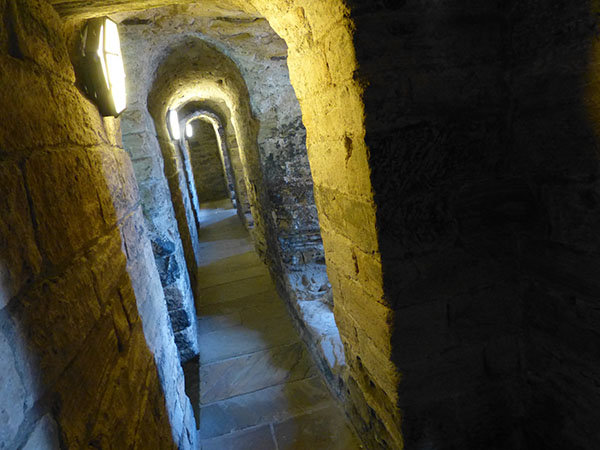
Hallways on both sides of the upper part of Great Hall
The chapel is also here, and it is designed beautifully with carved stonework on the ceilings and above the doors.
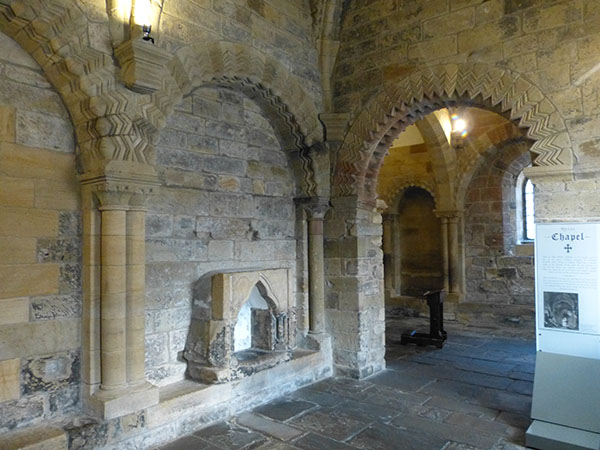
Have you ever visited Newcastle Castle?

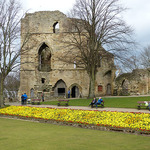

Leave a comment